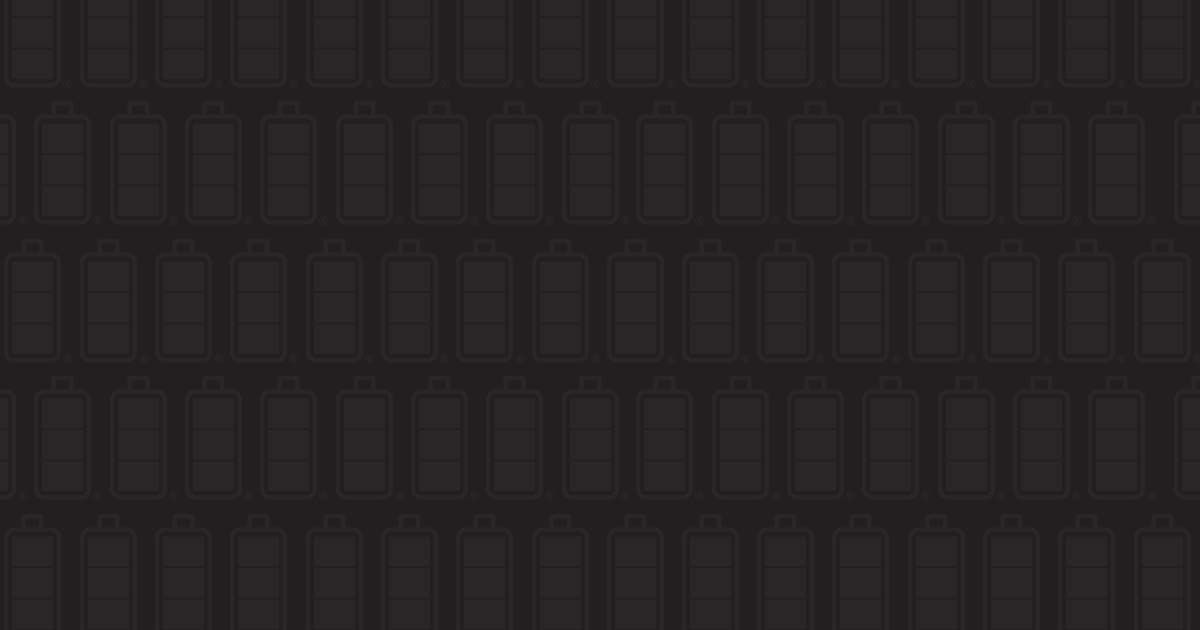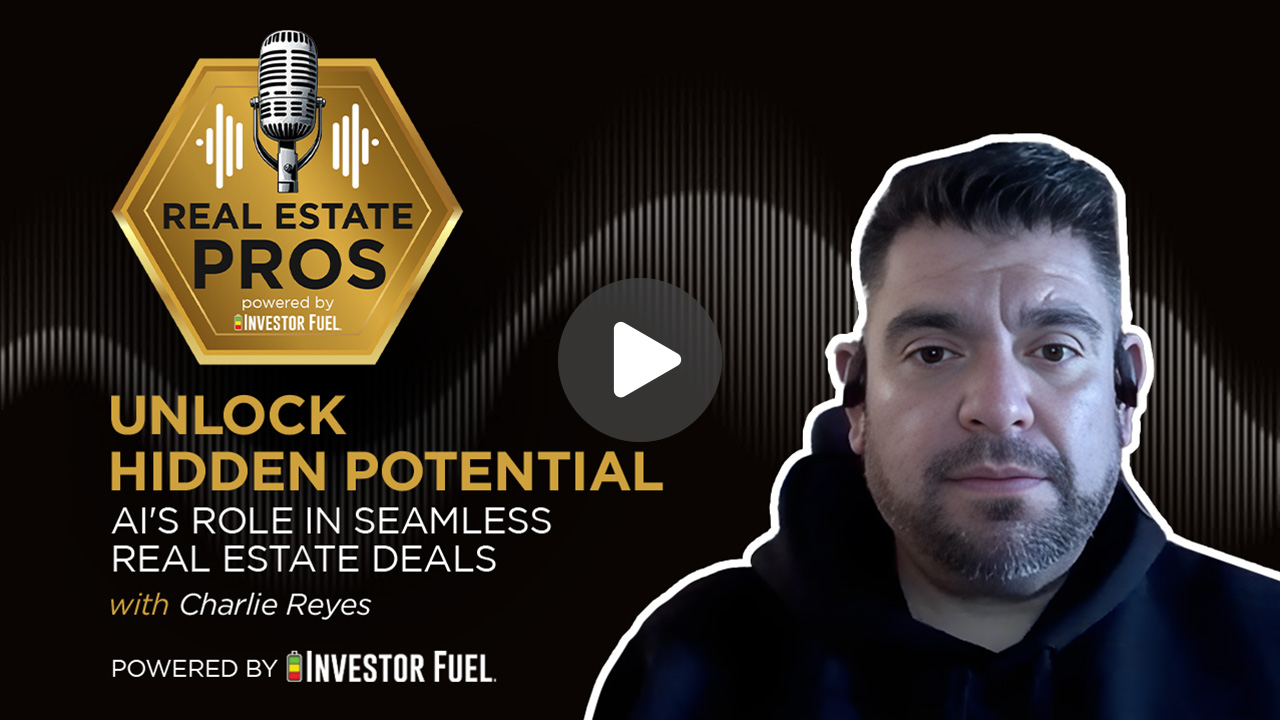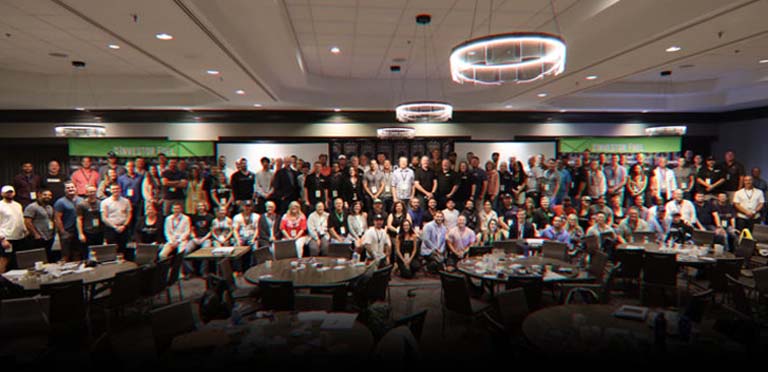<

Show Summary
In this episode, Stephen Schmidt interviews Charlie Reyes, a seasoned real estate investor who shares his journey from asset management during the market crash to leveraging technology and AI in property acquisition and renovations. Charlie discusses the importance of expanding beyond local markets, the evolution of technology in real estate, and effective strategies for managing remote renovations. He also reflects on lessons learned and offers insights for aspiring investors.
Resources and Links from this show:
Listen to the Audio Version of this Episode
Investor Fuel Show Transcript:
Stephen S. (00:06.182)
Welcome to the show y’all. It’s your host Stephen Schmidt of the real estate pros podcast where we interview the nation’s leading real estate entrepreneurs and service providers. Welcome back to the show. I am here with Charlie Reyes today. And today we’re going to be talking about his experience in the single family investing space. He’s been in real estate since 2007 started off as an asset manager.
and then has been investing full time for the last eight years and has a very unique process and a unique expertise in utilizing AI and technology to acquire properties, do underwriting, and he is buying everywhere, site unseen properties, which is not common. So Charlie, thanks so much for being on the show. Just to let everybody know and to remind you at Investor Fuel, we help real estate investors, service providers, and real estate entrepreneurs, two to five X their businesses.
to allow them to build the businesses they’ve always wanted, to allow them to live the lives they’ve always dreamed of. So Charlie, with that, welcome to the show. Excited to talk about today’s topic.
Charlie Reyes (01:12.846)
Thank you, thank you, appreciate it.
Stephen S. (01:15.258)
So just before we get started, can you share a little bit more about yourself? I know I gave you a little intro there, but share a little bit more about yourself and how you got here.
Charlie Reyes (01:24.258)
You know, I started as an asset manager back when the market crashed, helping banks sell a lot of their foreclosed properties. So back then, you know, started working with banks like Fannie Mae, Bank of America, Chase, all the big players, brought them on board to try to liquidate their properties en masse. So my job at that time was to try to guide the sellers to justify why they should take an offer during those times.
are depreciating about 1 to 2 percent a month in some cases and until things start to stabilize and you know I took it upon myself to start connecting with other investors who were able to buy these properties at that time in bulk and then helping the banks move these properties these large portfolios they had in mass and liquidated through alternative means. Through that I eventually ended up learning
how these guys invest, how these guys are looking and underwriting these type of properties. And at one point, in 2000, actually it was 2016, gosh, it was time flies, 2016 is when I decided to start my own company. I I could do this. Took whatever money I had, reached out to some of the bank contacts that we had and started acquiring some of these properties that they didn’t want to sell. But that,
You know, that entailed buying properties all over the US from New Jersey, Pennsylvania, Alabama, places in Minnesota, places I never even visited.
And really, we got such good deals at that time that it just required a clean out.
Charlie Reyes (03:08.544)
sell most of those properties at a profit without doing much work.
Stephen S. (03:15.088)
Wow. So do you, for somebody that’s like, let’s maybe say just getting started, do you think there’s still a lot of opportunity in that now or have things since 2008, you know, re-corrected themselves to where there’s not as much inventory to do something like what you did when you got started in 2016?
Charlie Reyes (03:34.926)
You know, when I was getting started, saw, I worked with a lot of investors and from 2008 to about 2012, I would say you would have a lot of guys that were buying.
Charlie Reyes (03:51.544)
Vegas, Arizona, they were buying tons of properties, 20, 30 houses a month. They were doing crazy numbers. By about 2012, the inventory started to dry up in a lot of those markets. And then that well of properties was no longer there. So I saw a lot of guys buy deals that weren’t good deals anymore, but because they could only buy one or two, they were trying to put their hands on anything they could. And they were taking some losses at that point because…
It just wasn’t a good deal anymore. So when you’re doing volume, you kind of offset a little bit of that risk where you have enough of them and you have to write it properly. You offset that risk. But when you’re doing a small amount of numbers and you’re just getting something just to be able to acquire it because you need to put food on the table, I feel like that’s where people lost out. So when I started my company, I looked at the guys that are still around in 2016 or 2015, I should say, and those guys were by nationwide. And what their key was, I’m going to buy
anything anywhere. know, most of those guys and kind of my inspiration of those guys were primarily doing the upper level homes, not entry level homes. I noticed in the REO space at least that some of those entry level homes are being neglected. Some houses were selling for a dollar, thousand dollars, $2,000 at that time. So I said, heck, if I could buy this cheap, why not get that entry level home? There’s gonna be usually a little bit more of a demand for that.
Stephen S. (04:50.918)
Hmm.
Charlie Reyes (05:18.094)
less qualified people, possibly more demand. So that’s really where I started was initially in that entry level home and trying to acquire anywhere in the US where there was a deal, regardless of the location, regardless of the state or whether.
Stephen S. (05:37.21)
Yeah.
Charlie Reyes (05:37.386)
So that’s how I, so I think for people right now, if it is scarce, there are deals out there, but you have to be able to get comfortable enough to be in an area that’s outside of your backyard. Because if you’re in LA, you’re just not gonna find something, especially if you’re new coming into it. I mean, can you, yes, anything’s possible, but it would be very, very, very challenging. You might spend a year looking for one deal, and then what?
Stephen S. (05:49.669)
Right.
Stephen S. (06:00.921)
Right. That’s especially because I mean to you know just even the the market itself like where you’re at you know you’re getting in other markets 250 to 350 thousand dollars you know I think the average median last I checked was
Stephen S. (06:25.114)
you know, for 500 grand in LA, you might be able to get a closet, right?
Charlie Reyes (06:30.36)
Colossus sounds about right. Yes. Yeah. I mean, I’ll give you one example. I grew up in a rougher area here in Orange County. Those houses now I just looked at some stats. They’re going for 980. I mean, those are houses that even five years ago, before COVID you could
Stephen S. (06:31.93)
Ha ha ha
Charlie Reyes (06:52.94)
These are not nice. These are small houses, bigger lots, but they’re not anything. They’re not a mansion to say the least.
Stephen S. (06:56.859)
Yeah.
Stephen S. (07:01.206)
Yeah, that’s incredible. And so you’ve been you’ve been almost forced to do business virtually and and become a pro at expanding out from where you live, which I think a lot of people have a fear of doing. What do you think it was for you? Was it because of the niche that you started in with REO or what caused you to
to start expanding outside of your home state for your investing so early on.
Charlie Reyes (07:34.83)
You it really became just simple math. You know, if you’re buying something cheap enough, you know, many agents say, oh, I would never buy a property in this area because it’s a really bad neighborhood. Well, my rebuttal to that is, okay, well, so you’re saying this house is worth, let’s say $200,000. So if you could buy this for $10,000 and then you’d have everything, would you not buy it? Oh, well, for 10,000, of course. So then that negates that argument that, hey,
Most things, not all, right? But most things, if you can put money into it and you’re buying it cheap enough, as long as it makes money, there’s no reason why not.
So that’s usually what I’m looking at is I’m looking at how do we value add regardless of.
Charlie Reyes (08:22.22)
And what we’re doing is we’re utilizing AI to do.
Charlie Reyes (08:32.45)
That’s I think the key biggest component is we’ve created a funnel of these Of these deals are available nationwide primarily on the REO side that does all that legwork for us where I don’t have to worry about Evaluations or anything like that. I’m just looking at just about everything that I’m touching has some sort of profit margin built into it
Stephen S. (08:55.622)
All right. So that’s super interesting. Tell me a little bit more about that, because I know we wanted to touch on the technology and how you’re utilizing that. So tell us more about that process.
Charlie Reyes (09:05.762)
Yeah, we created this program that we just use internally, just myself, the business partner who essentially I met.
six years, seven years ago now. It was very interesting. He was working on AI programs at that time. I was investing. I would do things very manually at that
venture capitalist that needed a sales guy and I spoke Spanish and he was trying to do a company out of Mexico where he felt there was a need as training I felt like I could provide value there but it didn’t line up because I felt like his sales crew had to be in the given area not out of Mexico City making phone calls. Long story short he got to know what I do with real estate I got to know what he does with the AI side of things
Stephen S. (09:30.086)
Hmm.
Charlie Reyes (09:55.442)
And we just thought, gosh, how do we work together? I wonder what we can do. I told him my process, very smart guy, but he was working on a program at that time, Darwin, which was essentially creating intuition with AI to try to estimate whether an investor should invest in a startup, a venture capitalist, that’s what they would do. And then they got pretty good at it. Eventually by 2020,
Stephen S. (10:19.568)
Mm-hmm.
Charlie Reyes (10:25.294)
He ended up leaving. And I would say for those two years between 2018 and 2020, him and I would always just randomly text each other, hey, I was thinking about you. And then he’d say, gosh, man, I was just thinking about you yesterday. I was thinking about you last week. So we went back and forth. We did that five times. And this is kind of a funny story. I tried to, when I’d shower, I’d do my notes and write things in the shower and get my ideas. And I was really busy in 2020.
And I was thinking about this guy and I was like, gosh, I wonder what he can help do for us with this technology side. I wonder how he’s doing. I get out of the shower and I have a text message from him. And I’m just like, this is too creepy. So I called him and I met him in, where are you? He’s in Miami. I was like, I met him down there. We got a boat the next day, got on there, got some notepads and said, hey.
we build this? What can we use technology that’s available? What is AI can do for us? And what is manual work that can do for us to automate what I currently do? And think it was that Wednesday, NBA season shut down, Friday, all the fights were canceled, I think it was. COVID hit. He was actually sick on the boat. He actually had COVID, in fact. Funny enough, I didn’t catch it at that time.
Stephen S. (11:46.203)
Right.
wow.
Charlie Reyes (11:51.95)
I sold the properties that I had thinking that maybe the crash was coming and I ended up just focusing for like eight months on this program and building this thing out and creating documents and things of that nature and then we finally launched in November of 2020 and then the market obviously went crazy. By that time I started looking into the deals, was like wow, these are going up significantly.
Stephen S. (12:18.159)
Mm-hmm.
Charlie Reyes (12:22.018)
been using it ever since to really do just all the underwriting for us to create a funnel of
Stephen S. (12:29.776)
Sure. So if you hear that folks and you got excited, don’t get too excited because it’s exclusive to them. You can’t use it. But maybe, maybe in the future that’ll be a licensing deal for you guys.
Charlie Reyes (12:41.602)
Yeah, you know, we’ve thrown it out there. There’s been people that approach us. We’ve talked to banks that want to use some of the technology in particular, the underwriting piece of
that to lend to their borrowers. So I think we’ve got to fine tune it a little bit to really perfect it. And then I think we can use that licensing play to possibly investors or to other people. We recently talked about that too as well.
Stephen S. (13:12.87)
So for people that can use tools though that are not something custom built by you and a venture capitalist on a boat in Miami, I know that’s not exactly how it went, but for people that can utilize tools, how has technology changed your business in the last nine years since you started in 2016? What’s been the evolution of the tech that you’ve used to save time or just change the way that you do business?
Charlie Reyes (13:24.493)
Yeah.
Charlie Reyes (13:42.744)
mean it’s huge, you because you think about it now, you can buy a property in a whole different state, not just REO or anything, but any type of property, and you can kind of do all the legwork yourself by just going on the internet, right, and finding a property. mean, Zillow is one of the biggest tools out there that gives you some sort of estimate, and yeah, their values are not always accurate, but at least if you’re a novice, it gives you an idea, and at least you’re able to use that to…
Stephen S. (13:59.259)
Mm-hmm.
Charlie Reyes (14:11.746)
look what’s selling in that area and be able to target what the cheapest property is. Usually the cheapest property is gonna require work, so you’re gonna have to do some of that leg work to bring it up to par, but at least it puts you in the right direction. And you can submit an offer without even visiting. You can just make a phone call, you get an email, you sign electronically, you can do a FaceTime with somebody, doing a Zoom call with someone.
and you have everything you need to be able to submit an offer. What I personally use that’s been a game changer is during COVID, things really changed when it comes to finding and getting bids. Pre-COVID, I could get three bids from three different guys and they were all great bids and people were kind of begging for your business. Post-COVID, when we started buying things again, the issue that we ran into between 2020 and…
let’s say 2022, right around there, 2023 even, was everybody was so busy, everyone. So to even get one bid was like pulling teeth. And to get a contractor that was good was even harder because everyone that was good, guess what? They were busy or they would give such a high quote that it just didn’t make sense for the deal, right? Because they just have so much work going on. And if you’re good at what you do, you’ll be busy. Right, so.
Stephen S. (15:36.026)
Yeah.
Charlie Reyes (15:36.072)
I felt that that was a big issue for us. it kind of had me tweak my process on how to manage properties remotely, where before I really didn’t have a process flow things. just, you know, we hired people, got the work done. And I would say, you know, nine out of 10 deals would just kind of work seamlessly with having the hiring the right people. Post-COVID, it started feeling like it would flip completely. was, know.
Stephen S. (15:58.534)
Mm-hmm.
Charlie Reyes (16:06.222)
Six out of ten deals had some sort of issues with renovations or slowdowns and things like that so what I found that was a game-changer is It always seemed that you give you know quarter 20 % There one third deposit depending who the contractor is to start and you pay them in phases And it was really up to about that 70 % Maybe 75 % mark
Stephen S. (16:10.968)
you
Charlie Reyes (16:35.342)
these guys would blow through the job and do a killer job. And it was always that last like 30 % that you would spend one month on that 70 % and it would take three or four months on that last 30%. And I had to scratch my head a little bit to figure out why that was an ongoing issue and it really became that a lot of these contractors, they’re robbing Peter to pay Paul. The money that you paid them, they’ve already burned.
that they had to finish but at the end the material cost is really where
bulk of the money goes into, right? Your vanities, your cabinets, your fixtures, et cetera, et cetera. And they just simply don’t have the money to do that until they get another job. So the solution for that was to kind of take that piece back and figure out how do I do that without being there? And how do I get estimates and accurate numbers of that? So I did connect with a person out of Columbia.
Stephen S. (17:16.751)
Right.
Stephen S. (17:34.629)
Mm.
Charlie Reyes (17:43.086)
project down in Florida. She was an architect.
We get a list of materials that we’re gonna need for the whole project. We get measurements without actually having to sit there and measure and rely on these guys to do that for us. And luckily, the iPhones have Linear, you could use, Linear, which has a Polycam app that literally measures your entire room and gives you a 3D rendering of the room. Barkit takes that information. They get measurements of all the floors. They get measurements of the bathrooms. We draw out.
floor plan’s gonna change, so they have a before and after for the contractor. And essentially, I hire the contractor to do the job on just labor costs. So all they gotta focus on is delivering the labor, that’s their only stress. They get a little bit of money to cover the labor cost. They don’t have to worry about anything else. I take care of that. I order the materials for them. We take care of the rough materials. So now it’s all in my control. And as long as I have things for them, those guys can perform.
Stephen S. (18:39.27)
You
Charlie Reyes (18:46.19)
you as long as they show up, of course. Yeah, but that’s the only way that you’re able to do this remotely.
Stephen S. (18:46.598)
Yeah, that’s smart as hell man. That’s smart as hell.
Stephen S. (18:55.59)
Right. 100%. Most of my close friends outside of real estate are contractors. I can tell you how many times, even I, I had a good friend of mine, and I came from the roofing space back in the day.
Charlie Reyes (19:06.666)
Yes. Yes.
Stephen S. (19:17.536)
And every now and then when I had a friend that would have an issue, I’d still go and look at a project for him. And I just have always had relationships with general contractors because of it. So I’ll still pimp a job out to somebody, you know? And I swear, we looked at a State Farm claim a year ago and they just wrapped it up last month. And it’s because, A, State Farm took forever, which they always do when it comes to insurance claims. But then my buddy who…
did the job, he ran out of cash and had some labor guys that were horrible and did a bad install and you know, all those things. And so when you remove that element of, you’ve got, you know, $15,000 in materials or 30,000 or 40,000 in materials, when you remove that out, because like you said, they’re taking this from this job to pay for this job and whatever else. And then the next thing you know, it’s four months in the future.
and your job’s not complete and they don’t have any money, they’re probably not gonna come back and finish it until they figure that out and you put enough pressure on them, right? So that is such a smart, I love hearing that, such a smart fix, man.
Charlie Reyes (20:23.512)
Yeah, and it’s these balances too, right? Because I think the other issue that I ran into is the quality of the contract that you have also. So what I do is I use hard money loans for these. I use Anchor for pretty much everything that I do. And they have draw inspectors that go out to the property. So anytime we need to draw, we fill out the forms, send it to them. They send a guy out there. I put myself as a contact person to be able to…
Stephen S. (20:32.09)
Yeah, 100%.
Charlie Reyes (20:51.0)
to be able to be reached out to before getting access. And then I just talk to the guy, hey look, here’s the situation, I’m out of state, I’m not in the area, I have an agent that I vet in advance and say hey, part of your job when you’re gonna get this listing is I’m gonna need you to go there at least once a week, once, twice a week. So they, the contractor, knows that there’s somebody watching them. So you can tell me how things are coming along, how things are progressing. But then on top of that, I also hire the
inspector so I can leverage another person and say hey look can you take you take your normal photos that you normally do but take some extra photos of work that seems incorrect most of these draw inspectors are either ex investors they’re actual inspectors like like full-throw inspectors ex contractors as well so most of these guys have a really good background and understand and they see enough houses that they know how they should be done you know so they’re pretty
Stephen S. (21:46.574)
Right. Yeah.
Charlie Reyes (21:49.39)
pretty versed in that space and they can provide you really good feedback if there’s shoddy work being done or something’s not looking proper or you’re just in an emergency, you need somebody to go out there. You you give them extra 50 bucks, it doesn’t cost you much to be another boots in the ground for you. So that’s another way that you have your agent and these guys that could be that additional level of inspection. That top with what I personally do is I use
detail contract of what the terms are. Essentially it gives me the ability to fire them at any point if they’re not doing what they need to do. I typically set it up where I’m able to.
get.
Charlie Reyes (22:35.95)
photo or videos I should say of the house weekly and that’s part of it. If they don’t provide those videos, essentially I penalize them. I haven’t enforced it, but it’s in the contract so I can if I want to. And the videos is typically something they do a walk through where they’re talking about what was completed that week and what they’re gonna work on next week. And the reason that I ask of them that information is so they start planning on what needs to be done the following.
And then if they’re telling me that, next week I’m going to do the bathroom, I kind of make sure that the towels are there for them. Where are those going to be at? And if they’re not going to be there on time for whatever reason, hey, instead of doing the bathrooms next week, can you work on X, Y, and Z, go to the backyard until Wednesday when the towels come in? So it’s that kind of fourth side as well that gets them to think and it gets me to think as well as to what may be missing.
Stephen S. (23:32.774)
Yeah, it sounds like you’ve got your SOPs in place and down pat for sure. To make sure that it all goes smooth and you make as much money as possible,
Charlie Reyes (23:41.838)
I think now speed to market is more important than ever. know these these errors that I made in the pre in the know, that’s 20 20 to about 20 23 or so Yeah, things got delayed things took longer but we benefited from that because the market was going up and it was going up so much more that your carrying costs are being upset by the extra Sales price that the property was getting once you actually exit it
So you really didn’t feel that pain of like, oh gosh, it me nine months to do this job or eight months to do this job. Well, my house sold for 300 when I thought it was gonna sell for 250. So you’re like, okay, great. But we’re in a different space now, right? So we’re probably in a market that’s gonna start declining and going down. So there is that possibility that it can go down a percent or two how things used to be before. And now if you don’t get the house finished sooner than later,
not only you’re gonna have more carrying costs, but now you’re gonna also miss your resale values that you initially underwrote the deal at, and that’s gonna cost you.
Stephen S. (24:49.926)
Yeah. So one last like real big question for you before we kind of get things wrapped up is if you were to be able to go back to when you got started and put yourself in those shoes, but you were able to do it with the knowledge you currently have, the tools you currently have. If you were to put yourself back there in 2016,
getting started in the investing side, what would you do differently and what would you do the same knowing what you know now?
Charlie Reyes (25:23.128)
it would have been to invest in staff, in a team. I think that would have been probably the best thing to start with is to be able to have some resources, someone to lean on so when you are growing and you are buying more properties, you have the resources to be able to do some of these tedious tasks. And that could be somebody overseas too. It doesn’t have to be someone you’re paying $60,000 a year because you’re just getting started, but it could be.
Stephen S. (25:29.008)
Mmm.
Charlie Reyes (25:51.414)
Some of the you kind of take under your wing that as you’re both learning it together or doing things together, maybe it’s somebody, you’ll be surprised how many people overseas have, who are engineers that are willing to do things at a very, very, very cheap price. And engineers are essentially they’re problem solvers, right? That’s their main function. How do I get from A to Z and make that happen, regardless of what their background is? So that’s their mentality.
Stephen S. (25:51.523)
Right.
Stephen S. (26:06.618)
Right.
Stephen S. (26:11.227)
Mm.
Charlie Reyes (26:18.968)
So if you get somebody like that on board to train and learn with them, they could be kind of your right hand man. It could be a reflection of you essentially. So I feel like if you don’t find somebody at a reasonable price, could pay off 10.
Stephen S. (26:33.094)
What would you do the same? So if you would have done that differently and hired staff earlier on to try to help shorten that learning curve or even just to help do things faster, what would you have done the same then?
Charlie Reyes (26:48.27)
the same in regards to how I currently did it. mean really that the technology piece I mean that that would be probably the the biggest thing is as far as how I grew into this space you know I started with buying some very inexpensive homes because of capital I you know was buying everything in cash at that time and not really using lenders at all when I first started I think that was probably the other thing I would have changed is realizing the advantage of getting a
instead of being buying everything in cash.
Charlie Reyes (27:22.668)
banks and the rehabs for the money. But as far as doing things the same, would just have been…
There’s not much more that I guess I could think of at least right now that I would have not done the same. I was gonna just bring some additional.
Stephen S. (27:41.648)
Well, Charlie, you’ve given us a ton of value and a ton of things to think about here. And we might have to have you come back on for a part two here at some point. But thanks so much for joining us today. if anyone wants to learn more about you, what you’re working on, where should they go?
Charlie Reyes (27:58.894)
Yeah, it’s a fix and flip poppy is my handle and that’s a f I X and P a P I You can find me there and Or my website is www.myairs.com
Stephen S. (28:16.558)
Love it. Awesome. There you go. Say it one more time. What was it? Fix.
Charlie Reyes (28:21.835)
It’s fix and flip poppy so it’s a fixed
Stephen S. (28:24.72)
Fix and flip poppy. Go and follow the fix and flip poppy. I’m assuming that’s on all platforms that you’re on and what you’re not on, you’re not on. Thanks for joining today’s episode. Make sure y’all subscribe and learn more about Investor Fuel and we will see y’all in the next episode. Thanks so much for being here, Charlie.







